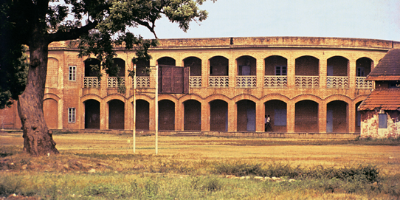Indigenous education in 19th Century (26 Jan 1820 Jahr – 11 Aug 1840 Jahr)
Beschreibung:
The modern education system of India evolved in the early nineteenth century.In the 18th and early nineteenth century, British were unaware of the extent of traditional educational system and they generally believed that there is nothing to highlight in the indigenous education and emphasized English education as the best.
Between 1828-1838, East India Company surveyed to understand the indigenous education system in India.Much of our knowledge about the spread of Indigenous education comes from the following reports:
1. Enquires by Thomas Munro 1822-26 on Madras
2. Enquires by Elphinstone in Bombay- 1823-29
3. William Adam enquires and report on Bengal 1835-38
and later enquiry about Punjab indigenous education by G W Leitner in 1882.
Broad findings of these reports are:
In almost all villages had Patshalas and Maktabs which were taught by Guru’s and Maulvi’s. Largely we had an informal system where teachers were not paid in cash, classes were held in home of teachers , under trees, temples , mosques and Gurudwaras. Students mainly learnt the the three R’s (Reading, Writing and Arithmetic). There no printed books, only local slates and pencils were used. Home schooling was widely prevalent, especially in aristocratic families. Except in Panjab, there were no schools for girls. Girls largely remained out of schooling system (barring Panjab). There were division of classes in village Patashals, senior - advanced students used to monitor the learning of children in lower classes. This system in Madras inspired Monitoral/Madras system to educate poor farmers in England.
Most of the people acquired their vocational education from their ancestors not the formal mode of education. The instruction of higher education was in classical languages like Sanskrit, Arabic, and Urdu. The educated Brahmins used to teach students from all over the country, and the students were supposed to board at the teacher's residence. The monopoly of high-class Hindus was prominent in higher education which mainly focused on scriptures, grammar, literature, and philosophy. High-class Muslim students availed their formal education from madrassas where the language of instruction was Arabic and Urdu.
Indian society at the end of the eighteenth century was essentially a feudal society
Role of state (kings) in education was limited to supporting few scholars on religious consideration. Priestly classes who formed a very small minority needed formal institutions for religious instruction and therefore created and maintained them through their own efforts, with such support from the princes
References:
1. Naik, J. P., & Nurullah, S. (1974). Students' history of education in India 1800-1973. MacMillan company of India limited.
2. Dharampal. (1983). The beautiful tree: Indigenous Indian education in the eighteenth century.
3. Ghosh, S. C. (2000). The history of education in modern India: 1757-2012. Orient Longman.
Zugefügt zum Band der Zeit:
Datum:
26 Jan 1820 Jahr
11 Aug 1840 Jahr
~ 20 years
